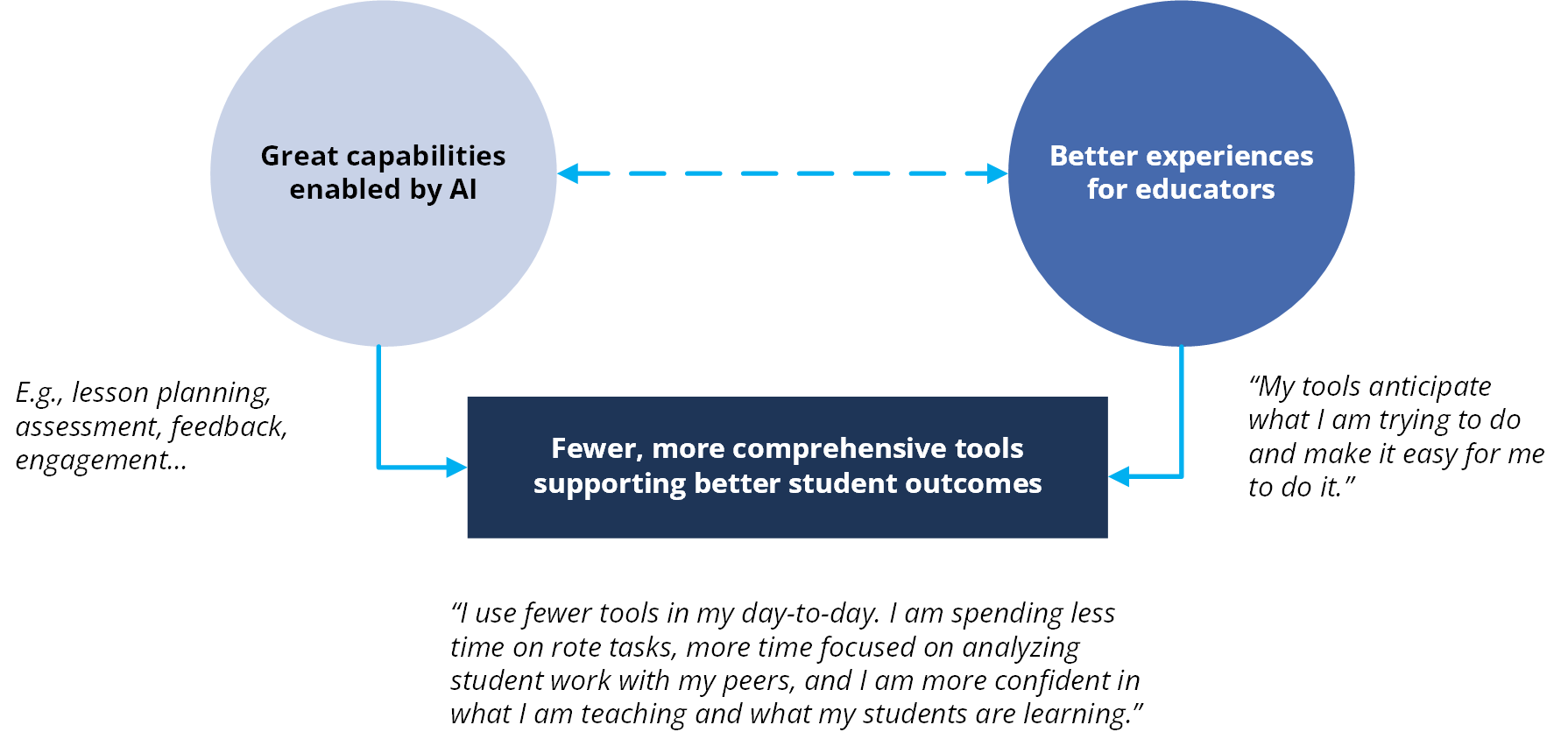Framework for Organizating AI Innovations in Education
Our long-term vision is to move the market to fewer and more comprehensive tools that create instructional coherence and improve teacher and student learning. The key to doing this lies in:
Leveraging rapidly evolving AI capabilities, and
Integrating those capabilities into better experiences for educators and students
The 10 year vision
Where we see AI innovation playing a role
The framework below organizes promising AI innovations into six categories that:
Support the educator’s planning
Extend the educator’s reach
There are numerous examples of innovations that could be pursued in each category. Time should be spent on testing them in context with educators and students to improve both UI/UX and impact.
It will also be critical to develop seamless UX for educators to “Make it Coherent,” or move directly from planning to enactment with a minimum of additional work. AI can enable the planning tools to seamlessly incorporate insights from student and classroom work through a variety of different systems. See below.
Examples of how AI can be deployed
| Category | Examples |
|---|---|
| Teacher Coaching |
|
| Adapt Curriculum with Rigor |
|
| Student Practice |
|
| Small Group/Peer-to-peer Facilitation |
|
| Augmented Tutoring |
|
| Make It Coherent |
|
Fellowship Opportunity
If you are interested in joining Teaching Lab’s efforts to transform teaching and learning via AI-enabled tools and supports, please check out our Fellowship opportunity.


